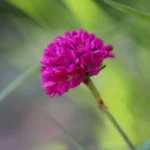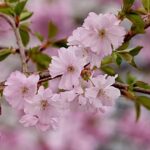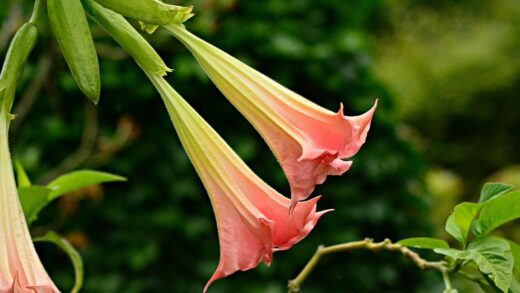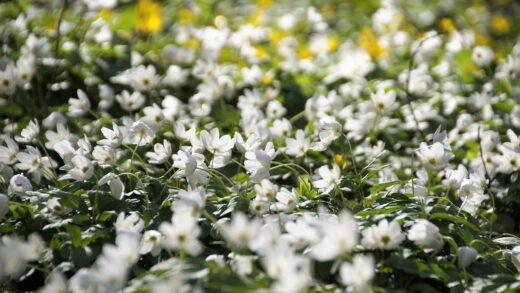Providing weigela with the appropriate nutrients through a well-timed fertilization program is essential for promoting lush foliage, vigorous growth, and an abundance of its signature trumpet-shaped flowers. While weigela is not an exceptionally heavy feeder, it benefits greatly from supplemental nutrients, particularly when grown in soil that is less than ideal. A proper understanding of its nutritional needs allows a gardener to support the plant’s health, enhancing its natural beauty and resilience against pests and diseases. A strategic approach to fertilization ensures the shrub has the necessary building blocks to thrive throughout the growing season.
Fertilization is fundamentally about supplementing the soil’s natural nutrient supply to meet the demands of the plant. The three primary macronutrients required by plants are nitrogen (N), phosphorus (P), and potassium (K), each playing a distinct and vital role in the plant’s life cycle. Nitrogen is crucial for leafy, vegetative growth; phosphorus supports root development and flower production; and potassium contributes to overall plant health and hardiness. A balanced supply of these, along with various micronutrients, is the key to a flourishing weigela.
It is important to approach fertilization with a measured hand, as both nutrient deficiencies and excesses can be detrimental to the plant. Applying too much fertilizer, especially high-nitrogen formulas, can lead to rapid, weak growth that is more susceptible to pests and frost damage, often at the expense of flower production. Conversely, a lack of essential nutrients can result in stunted growth, yellowing leaves, and sparse blooming. The goal is to provide a balanced diet that supports steady, healthy development.
This article delves into the specific nutrient requirements of weigela, guiding you on how to choose the right fertilizer and apply it at the most effective times. We will explore the differences between various fertilizer types and provide insight into diagnosing and addressing potential nutrient deficiencies. By following these professional guidelines, you can create a fertilization plan that ensures your weigela receives the optimal nutrition needed for a spectacular display year after year.
Essential nutrients for weigela growth
Weigela, like all plants, requires a spectrum of essential nutrients for healthy growth, which are typically absorbed from the soil through the root system. The most critical are the macronutrients: nitrogen (N), phosphorus (P), and potassium (K). Nitrogen is the primary driver of vegetative growth, responsible for the development of lush, green leaves and strong stems. A sufficient supply of nitrogen in the spring is vital for the plant to produce the foliage needed to support a heavy bloom cycle and conduct photosynthesis effectively.
More articles on this topic
Phosphorus (P) plays a central role in energy transfer, root development, and the processes of flowering and fruiting. For weigela, an adequate supply of phosphorus is directly linked to the quantity and quality of its blooms. It helps the plant set buds and provides the energy required to produce its vibrant, trumpet-shaped flowers. Strong root growth, also promoted by phosphorus, is the foundation of a healthy plant, enabling it to absorb water and other nutrients more efficiently.
Potassium (K) is often referred to as the “quality” nutrient, as it is involved in regulating many of the plant’s internal processes. It improves the plant’s overall vigor, enhances its resistance to diseases and stress from drought or cold, and strengthens cell walls. For weigela, potassium is essential for maintaining hardiness and ensuring the longevity of the shrub, helping it to withstand the challenges of various environmental conditions throughout the year.
Beyond these primary three, weigela also requires a range of secondary nutrients, such as calcium, magnesium, and sulfur, as well as micronutrients like iron, manganese, and zinc, albeit in much smaller quantities. In most healthy garden soils rich in organic matter, these micronutrients are naturally available. However, deficiencies can occur, particularly in soils with an imbalanced pH, leading to specific symptoms that can inhibit the plant’s growth and aesthetic appeal.
Choosing the right fertilizer
Selecting an appropriate fertilizer for weigela is a straightforward process once you understand the plant’s needs. A balanced, all-purpose fertilizer is generally the best choice for established shrubs. Look for a product with an N-P-K ratio where the numbers are relatively close, such as 10-10-10 or 14-14-14. This type of formulation provides an even supply of the three main macronutrients, supporting overall plant health without forcing excessive growth in one area, such as foliage, at the expense of flowers.
More articles on this topic
For gardeners who want to specifically promote flowering, a fertilizer slightly higher in phosphorus (the middle number) can be beneficial. These are often marketed as “bloom booster” formulas. However, it’s important to use these with caution and only if a soil test indicates a phosphorus deficiency. Unnecessary application of phosphorus can lead to nutrient imbalances in the soil and contribute to environmental pollution through runoff. For most healthy weigela, a balanced fertilizer is perfectly sufficient.
The formulation of the fertilizer—whether it is granular, liquid, or a slow-release product—also matters. Granular fertilizers are easy to apply and break down over a period of weeks, providing a steady supply of nutrients. Slow-release formulations are even more convenient, as a single application in the spring can feed the plant for several months. Liquid fertilizers are fast-acting and are absorbed quickly by the plant, making them useful for providing a quick boost or correcting a specific deficiency, but they need to be applied more frequently.
Ultimately, the best choice often depends on the gardener’s preference and the specific condition of the soil. Amending the soil with rich organic matter like compost is one of the most beneficial practices, as it not only provides a slow, natural release of a wide range of nutrients but also improves soil structure and health. Often, a combination of annual compost application supplemented with a balanced granular fertilizer provides the ideal nutritional program for weigela.
The optimal fertilization schedule
Timing the application of fertilizer is just as important as choosing the right product. The best time to fertilize weigela is in the early spring, just as new growth begins to emerge. A single application at this time provides the shrub with the necessary nutrients to support the development of healthy foliage and a robust set of flower buds for the upcoming blooming season. Applying fertilizer too early, before the plant breaks dormancy, is ineffective as the roots are not yet actively absorbing nutrients.
For most garden situations, one application of a balanced, slow-release granular fertilizer in the spring is sufficient for the entire year. The granules should be scattered evenly on the soil surface around the base of the plant, extending out to the drip line. It is important to avoid concentrating the fertilizer against the main stems, as this can burn the plant. After application, gently work the granules into the top layer of soil and water the area thoroughly to help dissolve the fertilizer and carry it down to the root zone.
If using a liquid fertilizer, applications will need to be more frequent, typically every two to four weeks throughout the spring and early summer, according to the product’s instructions. While fast-acting, this method requires more consistent effort. It is a good option for container-grown weigela, where nutrients can leach out more quickly with each watering, or for giving a quick nutritional boost to a plant that appears to be struggling.
It is crucial to cease fertilizing by mid-summer. Applying fertilizer, especially those high in nitrogen, late in the growing season can stimulate a flush of new, tender growth that will not have sufficient time to harden off before the first frost. This new growth is highly susceptible to winter damage, which can weaken the overall health of the shrub. Allowing the plant to slow its growth naturally in late summer and autumn is a key part of preparing it for winter dormancy.
Organic versus synthetic fertilizers
Gardeners have the choice between organic and synthetic fertilizers to meet the nutrient needs of their weigela, and both options have their own set of advantages. Organic fertilizers are derived from natural sources such as compost, well-rotted manure, bone meal, and fish emulsion. Their primary benefit is that they improve the soil’s structure and health over time. They feed the beneficial microorganisms in the soil, which in turn break down the organic matter and release nutrients slowly and naturally for the plant to absorb.
The slow-release nature of organic fertilizers means there is less risk of over-fertilizing or burning the plant’s roots. They provide a broad spectrum of micronutrients in addition to the primary macronutrients, contributing to a more balanced and sustainable soil ecosystem. The main organic amendment for weigela is a top-dressing of compost or aged manure applied around the base of the shrub each spring. This single act can often provide all the nutrients the plant needs for the year.
Synthetic fertilizers, on the other hand, are manufactured chemical products that provide nutrients in a concentrated, water-soluble form. Their main advantage is that the nutrients are immediately available to the plant, making them very effective for quickly addressing specific nutrient deficiencies. The N-P-K ratios are precisely controlled, so you know exactly what you are applying. They are also typically less expensive and easier to handle than bulky organic materials.
However, synthetic fertilizers do not contribute to long-term soil health; they only feed the plant directly. Overuse can lead to a buildup of salts in the soil, harm beneficial soil life, and potentially contribute to water pollution through runoff. A balanced approach is often the most effective. Using organic matter like compost to build a healthy soil foundation, and then using a synthetic fertilizer judiciously only if needed, can provide the best of both worlds for your weigela.
Diagnosing and correcting nutrient deficiencies
While a well-maintained weigela in healthy soil is unlikely to suffer from serious nutrient deficiencies, it is useful to be able to recognize the signs. The most common symptom of a nutrient issue is chlorosis, which is a yellowing of the leaves. The specific pattern of yellowing can often indicate which nutrient is lacking. A general yellowing of older, lower leaves, for example, is a classic sign of nitrogen deficiency, as nitrogen is mobile within the plant and will be moved from old to new growth.
If new leaves are the ones turning yellow, particularly between the veins while the veins themselves remain green, this often points to an iron deficiency. This condition, known as iron chlorosis, is common in soils with a high pH (alkaline), because the high pH makes iron insoluble and unavailable for the plant to absorb, even if it is present in the soil. Correcting this may involve applying chelated iron to the soil or foliage and taking steps to lower the soil pH over time by adding sulfur or incorporating acidic organic matter like peat moss.
A phosphorus deficiency, while less common, can manifest as stunted growth and leaves that take on a dull, dark green or purplish hue. A lack of potassium can cause the edges of the lower, older leaves to turn yellow and then brown and dry, as if scorched. These deficiencies are best confirmed through a professional soil test, which provides a detailed analysis of the nutrient content and pH of your soil.
When a deficiency is identified, the corrective action should be targeted. For a nitrogen deficiency, an application of a nitrogen-rich fertilizer or a top-dressing of compost or manure will resolve the issue. For a phosphorus or potassium deficiency, a fertilizer specifically formulated with higher levels of these nutrients, such as bone meal for phosphorus, can be applied. Always follow the application rates on the product label to avoid over-application, and remember that building healthy, organically rich soil is the best long-term strategy for preventing nutrient deficiencies in the first place.

















